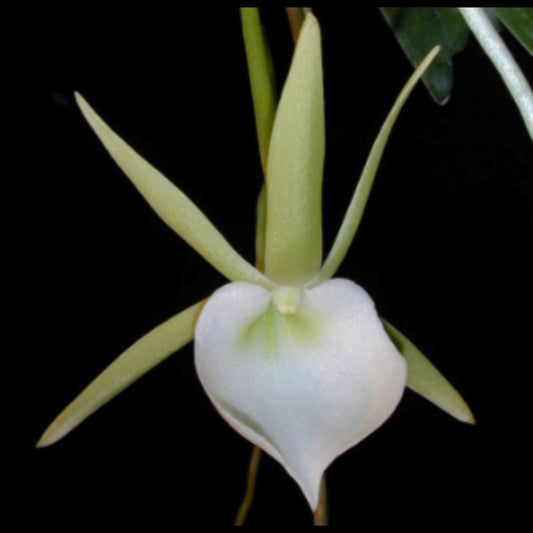
MSU Fertilizer vs. K-Lite Fertilizer: Understanding the Differences
Introduction:
When it comes to nourishing plants, the importance of providing essential nutrients cannot be overstated. In the realm of orchids and epiphytes, the nutritional requirements are unique and require careful consideration. This blog post aims to shed light on the disparity between two prominent fertilizers: MSU Fertilizer and K-Lite Fertilizer. By exploring their composition and application recommendations, we can discern the contrasting benefits they offer.
Plant Nutrient Composition:
Plants predominantly consist of water, which accounts for a staggering 95% of their composition. The remaining 5% encompasses vital elements such as carbon, hydrogen, oxygen, and nitrogen, obtained from the surrounding air and water. Surprisingly, the combined presence of other minerals only makes up about 1% of a plant's mass.
MSU Fertilizer:
The original "MSU Fertilizer," derived from the Greencare Orchid Special for RO Water formula, has gained popularity in the orchid-growing community. However, recent advancements have led to the development of a new formulation known as K-Lite Fertilizer.
K-Lite Fertilizer:
Recognizing the need to optimize nutrient balance, K-Lite Fertilizer offers a modified composition compared to MSU Fertilizer. With reduced potassium and phosphorus levels, it provides enhanced calcium and magnesium content, along with a comprehensive range of essential minor elements.
The Impact of Potassium and Phosphorus:
Scientific studies have indicated that an excess of potassium, whether applied, obtained from the environment, or accumulated in the growing media, can have adverse effects on plant health. This issue becomes particularly prominent when there is insufficient calcium and magnesium available. Excessive potassium hinders the absorption of these essential nutrients, exacerbating their deficiencies. To counterbalance this, K-Lite Fertilizer incorporates calcium and magnesium, accommodating water supplies with varying quantities while maintaining compatibility.
Mimicking Natural Nutrient Mix:
The K-Lite formula aims to replicate the nutrient mix that orchids and epiphytes receive in their natural environment. It emulates the combination of host plant exudates and accumulated airborne particulates that are washed down from the forest canopy during rainfall. This carefully designed formulation provides ample nutrition for these slow-growing plants while preventing root damage and the accumulation of mineral residues and waste.
Fertilizer Application Recommendations:
To ensure optimal growth, specific recommendations for fertilizer application are provided, be sure to follow the manufacturer's directions when working with chemicals.
Regular Feeding: For regular watering, it is recommended to feed at 25 parts per million (ppm) of nitrogen (N), using pure water, two or three times per week. This mimics the natural conditions these plants encounter in their habitat.
Once-a-Week Feeding: If you prefer a weekly feeding schedule, it is advised to use 75-100 ppm N. Alternatively, for feeding every two or three weeks, you can increase the nitrogen concentration to 150-200 ppm N.
Conclusion:
Understanding the difference between MSU Fertilizer and K-Lite Fertilizer is crucial for optimizing the growth and health of orchids and epiphytes. The modified composition of K-Lite Fertilizer offers a balanced nutrient profile that addresses the unique physiological demands of these plants. By reducing potassium and phosphorus levels and increasing calcium and magnesium content, K-Lite Fertilizer mitigates the risk of nutrient imbalances and deficiencies.
Furthermore, K-Lite Fertilizer's resemblance to the natural nutrient mix found in the plants' natural environment ensures that they receive the nourishment they require without the risk of root damage or the accumulation of mineral residues. This thoughtful formulation takes into account the slow growth rate of orchids and epiphytes, providing them with a steady and appropriate supply of nutrients.
When it comes to fertilizer application, the recommendations provided help orchid and epiphyte enthusiasts achieve optimal results. Whether following a regular feeding schedule or opting for weekly or bi-weekly feedings, the suggested nitrogen concentrations allow for flexibility based on individual preferences and plant requirements.
In conclusion, the difference between MSU Fertilizer and K-Lite Fertilizer lies in their composition and approach to providing essential nutrients. K-Lite Fertilizer's modified formula, based on scientific data and understanding of plant physiology, offers an optimized nutrient mix for orchids and epiphytes. By mimicking natural nutrient sources and providing clear application recommendations, K-Lite Fertilizer ensures that these unique plants receive the necessary nourishment for healthy growth and vitality. As orchid enthusiasts strive to cultivate thriving plants, the choice of fertilizer becomes a critical factor, and K-Lite Fertilizer emerges as a promising solution to meet their needs.









